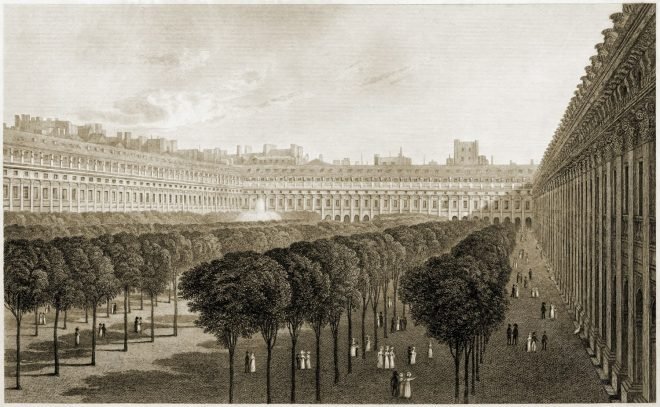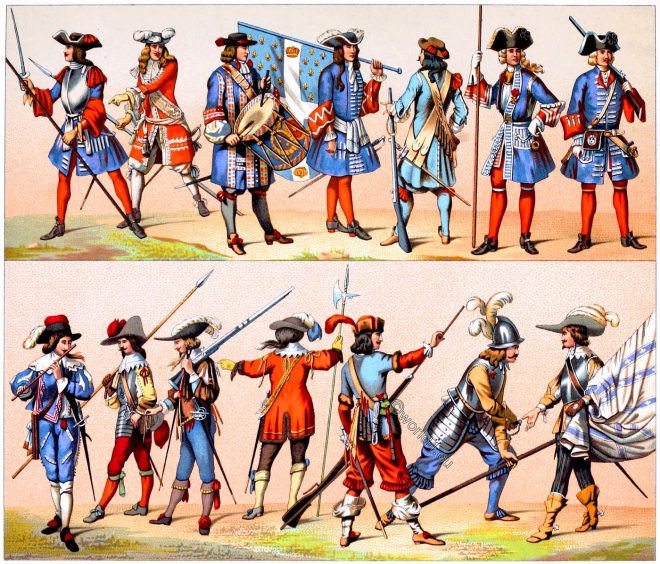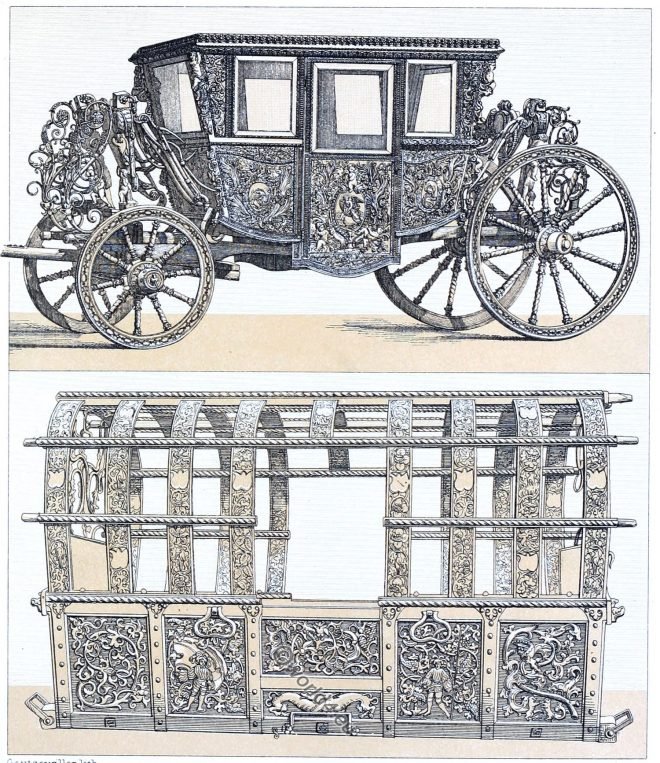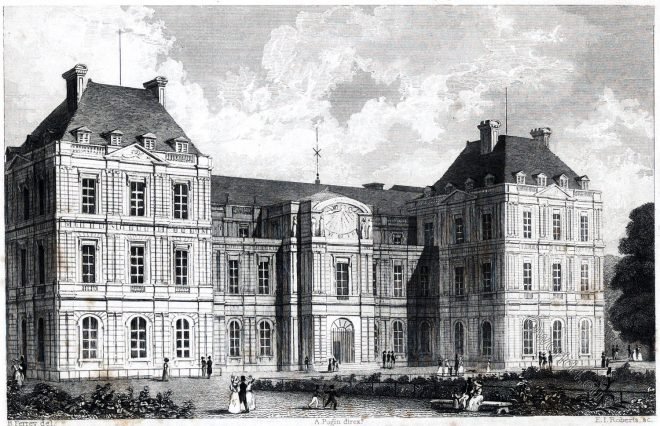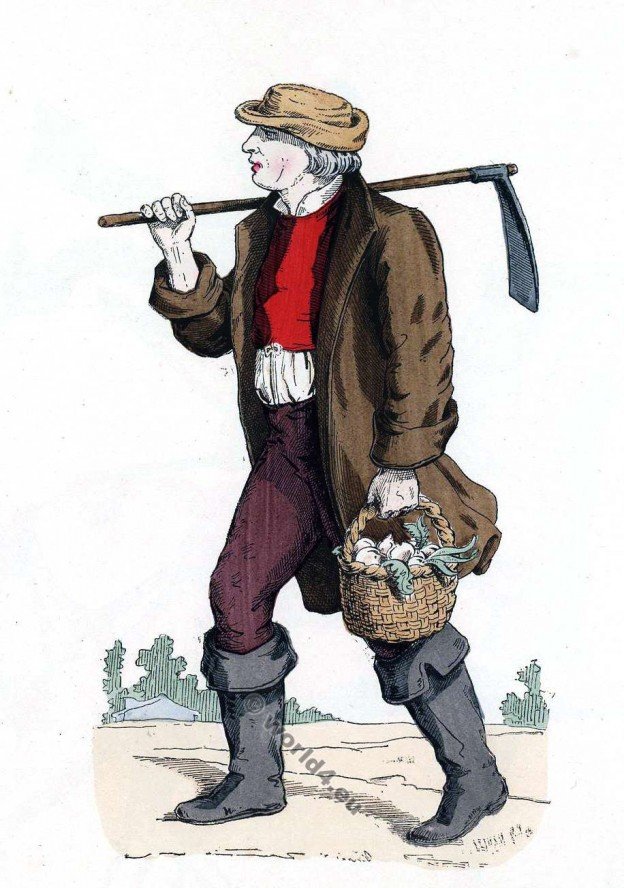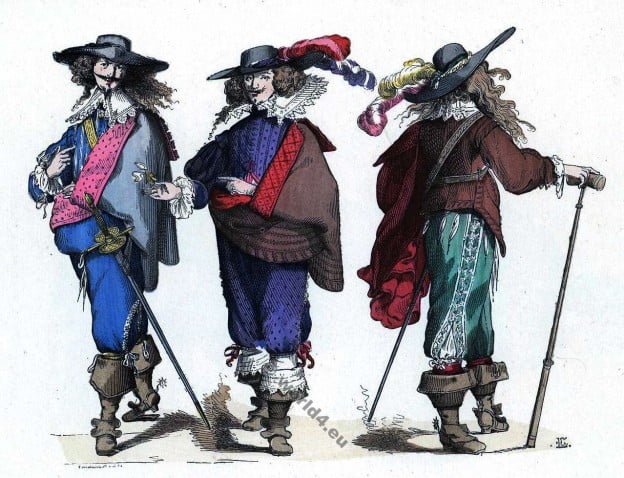Henri III’s favourites put on make-up and powder, wore earrings, lace and tinsel.
Category: Louis XIII
The silhouettes of the seventeenth century.
The disappearance of the hoop in the early years of the seventeenth century caused a change in the outline of the costume worn by the woman of fashion.
Paris. Palais Royal. French scenery in 1822.
This splendid building was commenced in the year 1629, by the Cardinal de Richelieu, from the designs of Le Mercier.
Uniforms of the French Guards since their creation. Costumes of Soldiers.
The French guards since their creation. Soldiers in the 17th and 18th century. Uniforms of Pikiner, Flag bearer, Tambour, Musketeer, Officer.
Design of a silk pattern in franco-oriental style. 17th c.
Design of a silk pattern in franco-oriental style based on Persian ornamentation. France at the beginning of the 17th century.
Transport wagons, coaches and carriages in 16th and 17th century.
Transport wagons, coaches and carriages in 16th and 17th century Europe. Coaches in France. Continental carriages in the 13th and 14th century.
The Luxembourg Palace at Faubourg St. Germain, Rue de Vaugirard.
THE Palace of the Luxembourg is situated in the Faubourg St. Germain, Rue de Vaugirard.
Civil costume from the time of Louis XIII. 17th century.
Costume civil du temps de Louis XIII. XVIIe siècle. Costumes historiques de ville ou de théatre et travestissements.
Paysan laboureur français du 16ème au 18ème siècle.
Costume of a French peasant farmer from the 16th to the 18th century.
Gentilshommes de 1615 a 1630. Gentlemen of 1615-1630.
Gentlemen costumes of 1615-1630. Costumes civils et militaires des Français à travers les siècles.



